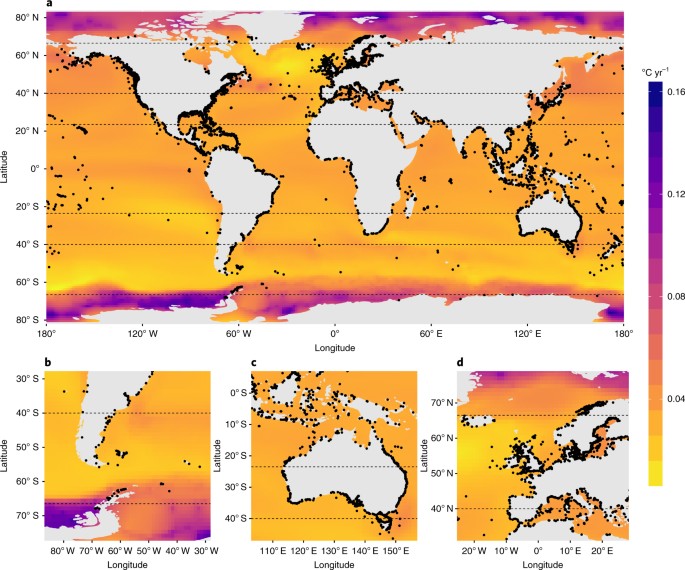
Abstract: "Marine protected areas (MPAs) are a primary management tool for mitigating threats to marine biodiversity1,2. MPAs and the species they protect, however, are increasingly being impacted by climate change. Here we show that, despite local protections, the warming associated with continued business-as-usual emissions (RCP8.5)3 will likely result in further habitat and species losses throughout low-latitude and tropical MPAs4,5. With continued business-as-usual emissions, mean sea-surface temperatures within MPAs are projected to increase 0.035 °C per year and warm an additional 2.8 °C by 2100. Under these conditions, the time of emergence (the year when sea-surface temperature and oxygen concentration exceed natural variability) is mid-century in 42% of 309 no-take marine reserves. Moreover, projected warming rates and the existing ‘community thermal safety margin’ (the inherent buffer against warming based on the thermal sensitivity of constituent species) both vary among ecoregions and with latitude. The community thermal safety margin will be exceeded by 2050 in the tropics and by 2150 for many higher latitude MPAs. Importantly, the spatial distribution of emergence is stressor-specific. Hence, rearranging MPAs to minimize exposure to one stressor could well increase exposure to another. Continued business-as-usual emissions will likely disrupt many marine ecosystems, reducing the benefits of MPAs."
Read More: https://www.nature.com/articles/s41558-018-0149-2
No comments:
Post a Comment